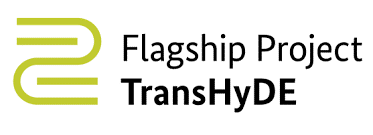Hydrogen barrier coatings for tanks, pipelines and more

For hydrogen tanks and the like, metallic materials (e.g. steel or aluminum) are still predominantly used today, either as solid materials or as liners in polymeric materials, which constitute an enormous additional weight. In order that lightweight materials such as fiber reinforced polymers can also be used for fuel tanks etc., which do not provide a sufficient barrier to hydrogen permeation themselves, Fraunhofer IFAM is developing barrier coatings which strongly reduce the permeability of hydrogen and thus offer versatile possibilities for lightweight construction in the aerospace industry, but also in other areas.
Development of a barrier coating for inner walls of fuel tanks in the "CryoCoat" project
The experts at Fraunhofer IFAM in the field of paint technology have a broad range of expertise in the development of barrier coatings against gases and liquids for a wide variety of applications. The focus here is particularly on the area of hydrogen barrier coatings and the need for these coatings affects not only the aerospace industry, but also the transportation industry and the entire hydrogen energy sector.
For the space sector, barrier coatings for the inner walls of fuel tanks to prevent hydrogen permeation have been successfully developed in recent years. The goal is to be able to use lightweight materials such as fiber reinforced polymers for the construction of the tanks, which themselves do not provide an adequate barrier against hydrogen. The fuel tanks are used for liquid hydrogen (LH2), but gaseous hydrogen is also present above the liquid. The barrier coating should work for hydrogen in both states of aggregation.
The coating solution developed as part of the "CryoCoat" project is based on a polymeric binder containing platelet-shaped pigments on a metal or silicate base, which form the actual diffusion barrier. The formulations can be processed using paint technology and can also be applied to large structures via spray application. As part of the space project, a prototype coating was developed whose barrier effect against hydrogen could be demonstrated.
Ongoing development of barrier layers in funded projects
This coating, developed in the "CryoCoat" project, is currently being adapted in other projects:
 Fraunhofer Institute for Manufacturing Technology and Advanced Materials IFAM
Fraunhofer Institute for Manufacturing Technology and Advanced Materials IFAM



